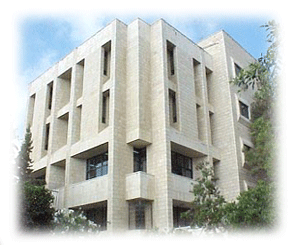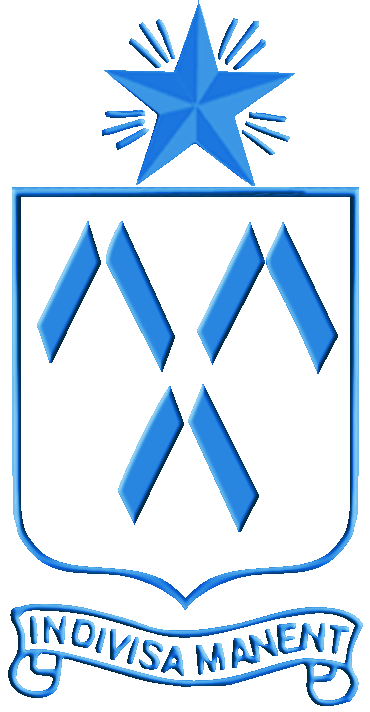The Audiovisual Center,
established in 1978, is a special facility for the faculty, staff, and students of Bethlehem
University. The Center is located in the lower level of
Bethlehem University Library and forms part of a larger unit
the "Media Services Center". It offers a wide range of
audiovisual, production, and support services to the
academic community. The collection consists primarily of
non-book materials and equipment to support the
instructional programs.
Collections:
I. A.V. Materials
The Audiovisual Center collects the following materials:
1. Audiotape:
A ribbon of acetate or polyester upon which is recorded speech or music.
They generally come in the following formats cassettes (1/8
in.).
2. CD-ROM Disc (Compact Disc-Read Only Memory):
A 4.72-inch disc on which laser has recorded speech, music,
photographs, films or computer programs in digital format which
can be accessed very quickly.
3. Overhead transparency:
An image on a transparent film which can be viewed
directly by transmitted light or through a
projector.
4. Slides:
Photographic transparencies on a small plate or a small plate film
arranged for projection.
5. Videotape:
Magnetic tape to record images and sounds.
The A.V. materials can be identified, retrieved, and accessed by using
the Online Card Catalog (OPAC).
II. A.V. Equipment:
The A.V. equipment includes the following:
1. Camcorder:
Still/ video digital camera with digital zoom
used for electronic motion picture acquisition.
2. Monitor:
A receiver used to view the picture being picked up by a video cassette
player.
3. Opaque projector:
A projector that can
enlarge information from paper, pages from a book or
nontransparent materials by reflecting light off the
material rather than transmitting light through it.
4. Overhead projector:
A projector that accepts
transparent sheets and projects the information prepared
on them onto a screen.
5. Slide projector:
Transmits the image from a slide onto a screen or similar surface for
viewing.
6.
Audio cassette recorder:
Device on which sounds are recorded or from which magnetically recorded
sounds are heard as a magnetic tape passes through the
mechanism.
7. Videocassette
recorder:
A device that records and
plays back visual images and sound as magnetic tape in a
sealed container, passes by the record or playback head
in the machine.
8. LCD projector
(Liquid Crystal Display/Digital Light Processing)
A device for projecting
Data/Video images on a screen.
9. DVD Player/
Recorder (Digital
Video Disc):
A device for playing, recording DVD
Discs. DVD Disc is an optical disc technology. The DVD Disc holds 4.7 Gigabyte of
information on one/two of its sides, or enough for a
133-minute movie. With two layers on each of its two
sides, it will hold up to 17 gigabytes of video, audio,
or other information.
10. Laptop:
A small mobile computer.
11. Microphones:
Converts sound into electrical signal.
12. Digital Audio Recorder (Mini
Disc MD):
A data storage device to store audio in a
digitalized format.
A.V. Services:
The AVC provides a variety of services:
Reserve Shelf:
Faculty place listening
or viewing assignments on Reserve for their classes.
These materials are kept in the AVC and are arranged by
course number.
Graphic Design:
The AVC has the basic facilities to produce some graphic materials.
Instructional & Reference Services:
Orientation tours, instructional sessions, and workshops are conducted
by the AVC for new faculty and students. AVC staff
members also assist users in finding information and
materials.
Playback Service:
The AVC provides equipment for playback of many
different audiovisual formats including CD-ROMS, DVDs, videocassettes,
slides, audiotapes, pictures, and transparencies.
A playback rooms (L3/L4) are
available and equipped to display a variety of
nonprinting formats. It accommodates 35-40 people. This
room may be reserved by faculty members and students
when a media program is an integral part of a class
presentation.
Video Conference Facility
rooms (L3 / Furno):
Two
rooms equipped with equipment to have a face to
face meeting in another place in the world.
L3
room, located in the lower level of the library, has a computer with LCD projector, Smartboard,
DVD/ video player, Cameras, 3D microphone, Sound
System and Plasma
screen with possibility to record the
conference and present any video/audio either
analog or digital format on the Smartboard.
Furno Hall, located in the Millennium
building, has a Laptop computer, LCD projector,
DVD/Video players, Sound System, Microphones and
a Camera.
Digital Video Editing:
The AV has a small lab to develop/ edit/ capture any
video / audio clips for a seminar/ report use.
Recording/Duplication Services:
The AVC may record
special lectures in audio or video format. Duplication
service provides single or multiple copies of
pre-recorded programs. These services are restricted to
faculty members only.
CD-ROM / DVD Service:
The AVC is equipped with
CD-ROM / DVD players and a small collection of CD-ROM /
DVD titles
that are available for teachers and students.
Scanning Service:
Any student can scan any
photo or text for his/her seminars or reports.
University ID Cards:
The AVC staff can print the university ID Cards.
Sound System Studio:
The AVC has the facility to record any interviews
using a mixer connected to a computer.
Borrowing Privileges:
Faculty, staff and students may borrow audiovisual materials and
equipment and use them either in the AVC or on campus.
Reservations for
equipment and playback rooms (L1/L3/L4) should be made 3 days
in advance of the date of use. They may be made by
filling out the A.V. reservation form available in the
AVC.
Loan Periods:
Students can borrow certain pieces of AV equipment and
materials only for the day with the presentation of a
valid library card. All items must be used in Room L2 in
the AVC or on campus. They should be returned not
later than 3:30 p.m.
AVC Hours:
Monday - Friday
8:00 a.m. - 4:00 p.m.
Attention:
No Drinking, Eating or Smoking is allowed.








